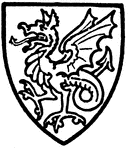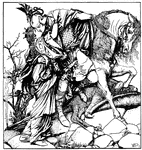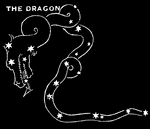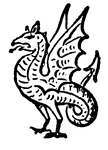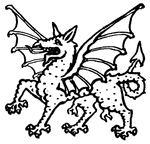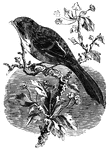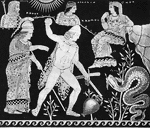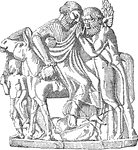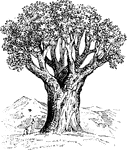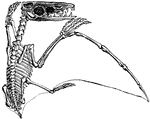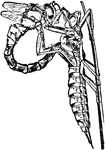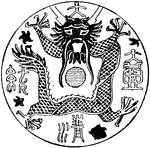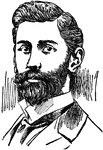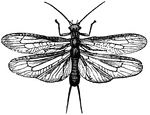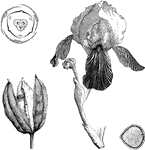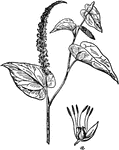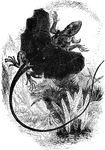
Flying dragon
The flying dragon gets its name from its ability to glide for short distance using a thin membrane.

Three-Bearded Rockling
"It is twelve to fifteen inches long, frequents rocky ground, feeds on aquatic insects, takes bait,…
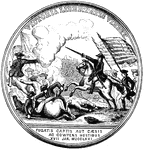
Morgan Medal Back
"Gold medal awarded to Morgan. The following are the devices and inscriptions upon the back of the medal:…

Eleanor Dragonfly
"Among the larger kinds of dragon-fly is the Libellula depressa of Linnaeus, common in Europe,…
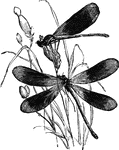
Virgin Dragonfly
"One of the most beautiful species of Euopean dragonflies is the Virgin Dragon-fly, Libellela virgo,…
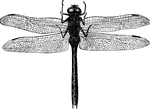
American Dragonfly
"They are often seen moving with a rapid flight over rivers, ponds, and meadows, alighting for a moment,…
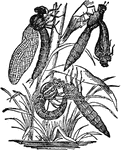
Dragonfly
"The Dragon Fly has a large, broad head, very freely attached to the thorax, and large, convex, prominent…
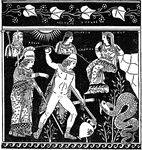
Cadmus and the Dragon
"Cadmus and the Dragon. (From a vase-painting at Naples.)" — The Delphian Society, 1913

Sphinx
"Sphinx is a Greek word signifying 'strangler,' applied to certain symbolical forms of Egyptian origin,…

Chimera
A fire breathing monster, the fore part of whose body, according to the Iliad, was that of a lion, the…
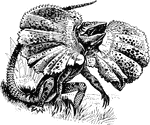
Frilled Lizard
The Frilled Lizard is so called because of the large ruff of skin which usually lies folded back against…
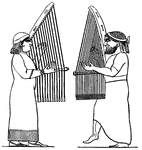
Assyrian Music
The Assyrians held music in honor, and empoyed it for liturgical purposes, as well as those of social…

Flying Dragon
About 4 inces in length and has a long slender tail. It has a large frill on each side of its body,…

Dragonfly
"The anterior portion of the body of Aeschua cyanea freed from the puparium." — Encyclopedia Britannica,…
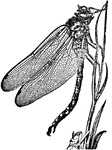
Dragonfly
"The perfect insect (the wings having acquired their full dimensions) resting to dry itself, preparatory…

Dragon Tree
"A tree of the natural order Liliaceae, remarkable for the size which it sometimes attains, rivalling…

Dragonfly
A dragon-fly and its development. Larva and pupa feeding at 1 and 3; 2, nymph ready to change; 4, a…

A. Dracontium and A. Triphyllum
Two plants of the Arum family: left, dragon arum (Arisaema dracontium); right, Jack-in-the-pulpit (Arisaema…
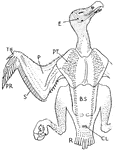
Lammergeier
"Young bearded griffin (Gypaetus barbatus). Showing the feather-tracts or pterylae, for instance those…
Thistle Stamens
"Stamens of a thistle, with anthers united into a ring. a, united anthers; f, filaments, bearded on…

Gothic Lectern
The Gothic lectern of the 15th century had a base made out of wood and the slope was made out of wrought-iron.…

Dragon-fly
An insect with four large transparent wings, that are net-veined. They are abundant in ponds and still…

Bearded Tortoise
"This species lives in stagnant water, and is altogether remarkable for its singular appearance."

Termes Lucifugus, Male
"The male weighs as much as thirty workers, and attains the length of nearly four-fifths of an inch."

Termes Lucifugus, Worker
"The workers are one fifth of an inch long; the body soft and of extreme delicacy, but the sharp mandibles…

Termes Lucifugus, Soldier
"The soldiers are twice as long, and weigh as much as fifteen workers. They may be distinguished by…
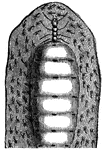
Termes Lucifugus, Female
"The female attains to six inches in length, and weighs as much as thirty thousand workers. It is an…

Larva of Perla Bicaudata
"An insect among the Neuroptera, which undergo incomplete metamorphoses. These flutter about the banks…

Larva of Nemoura
"An insect among the Neuroptera, which undergo incomplete metamorphoses. These flutter about the banks…

Larva of Perla Marginata
"An insect among the Neuroptera, which undergo incomplete metamorphoses. These flutter about the banks…

Ant Lion (Myrmeleo Formicarius)
"Ant-lions diffuse an odor of roses. Their flight, which is weak, distinguishes them from the dragon-fly."

Antlion
"A very beautiful species of the ant-lion is to be found in the climate which characterizes the south…
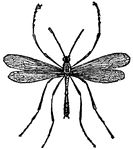
Bittacus Tipularis
"It resembles a large gnat. They are found on hedges and plants during the summer."
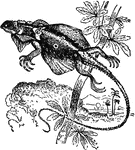
Flying Dragon
Draco volans, or the Flying Dragon, is a member of the genus of gliding lizards Draco. It can spread…
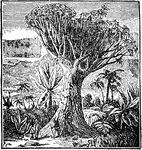
Dracaena
Dracaena is a genus of about 40 species of trees and succulent shrubs classified in the family Ruscaceae…
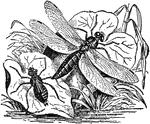
Dragon Fly and Nymph
An illustration of a dragon fly (right) and a nymph (left). A dragonfly is a type of insect belonging…
